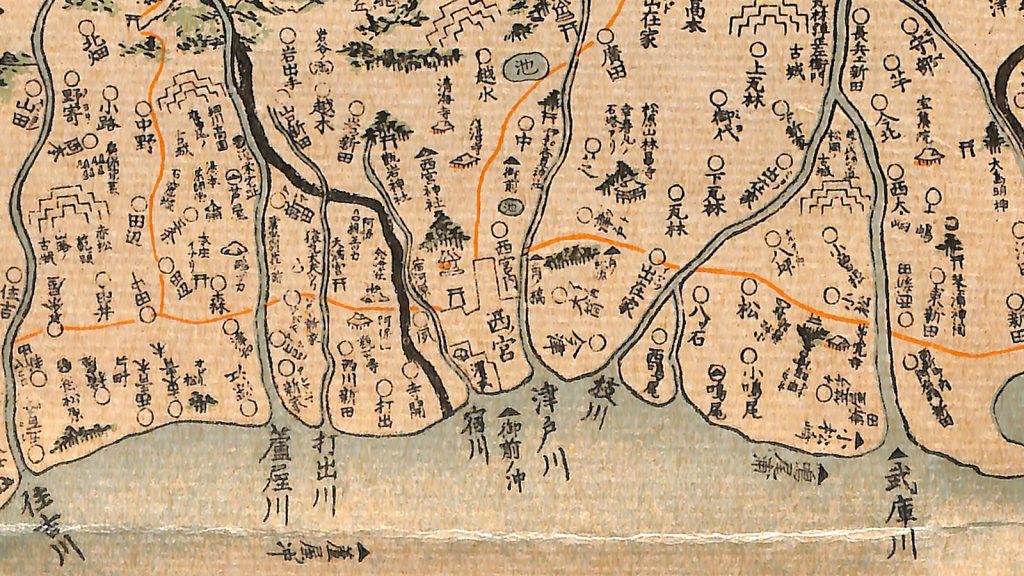Hello! We have a new official website and this is the first article in a series called “Sake Talk”. A new article will be posted on the first day of each month, so please check back regularly!
In this first article, we’d like to introduce you to Nishinomiya, the city where the Sake Museum is located. Nishinomiya City lies in the south-eastern part of Hyogo Prefecture. Hanshin Nishinomiya, the closest train station to the museum, is located between Osaka-Umeda station and Kobe-Sannomiya station on Hanshin Main Line. It takes approximately 15 minutes by the limited express to reach Nishinomiya station from the two stations respectively. Nishinomiya is known as an easy city to live in between the two big cities.

Nishinomiya is well-known for three things. The first one is the Hanshin Koshien Stadium, known as the home stadium for the famous baseball team Hanshin Tigers and the field used for national high school baseball championship games (approx. 10 minutes by car from the museum). The second famous thing in Nishinomiya is the Shinto shrine, Nishinomiya Jinja, the head shrine of the deity Ebisu known as “Ebessan” (approx. 5 minutes by car from the museum). The shrine is also famous for its annual Lucky Man race on January 10. The third thing Nishinomiya is known for is the sake brewing industry which began in and has been flourishing since the Edo period (1603-1867).
What is the connection between Nishinomiya and sake? From long ago, Nishinomiya has been an area with convenient transportation. Because it was located at the junction of two old roads: the route from Western Honshu to Kyoto called the Saigoku Kaido Road, and the route to Osaka called the Chugoku Kaido Road, it was a place where many people gathered. Nishinomiya also prospered because of the famous Shinto shrine, Nishinomiya Jinja, the shrine which has been worshipped at since ancient times. Nishinomiya has continued to prosper since the times when the surrounding areas were still rural and undeveloped.

Sake brewing is thought to have begun in Nishinomiya in or before the 1640s. The brewing method is thought to have been passed on from Itami, the area which lies northeast of Nishinomiya on the Saigoku Kaido Road. Sake brewing began in Itami around the 1600s. Some say that the sake brewing must have begun in Nishinomiya before the Edo period (1603-1867), because a regent and scholar from the Muromachi period (1336-1573) named Ichijō Kaneyoshi raved about the delicious sake of Nishinomiya in his collection of essays called Sekiso-ōrai. No other mention of Nishinomiya’s sake has yet been found in any historical books before the Edo period, but it could be possible. However, the sake brewed in the Muromachi period is thought to have been unfiltered sake (nigorizake), whereas the sake that was passed on to Nishinomiya from Itami was refined sake (seishu). The quality of the two sake are completely different. The sake that began brewing in Nishiniomiya in the 1640s was refined sake.
The refined sake created in Itami gained popularity in the Edo period especially in Edo (present-day Tokyo) as a new type of sake differing from the unfiltered sake. This eventually resulted in a vast majority of Nishinomiya-brewed sake being sold in Edo. The area currently called Nadagogo, which includes both Nishinomiya and Itami, flourished by obtaining the huge market of Edo, and thus the area became the largest sake brewing region in Japan.







This kind of ingenuity makes sake brewing more convenient.